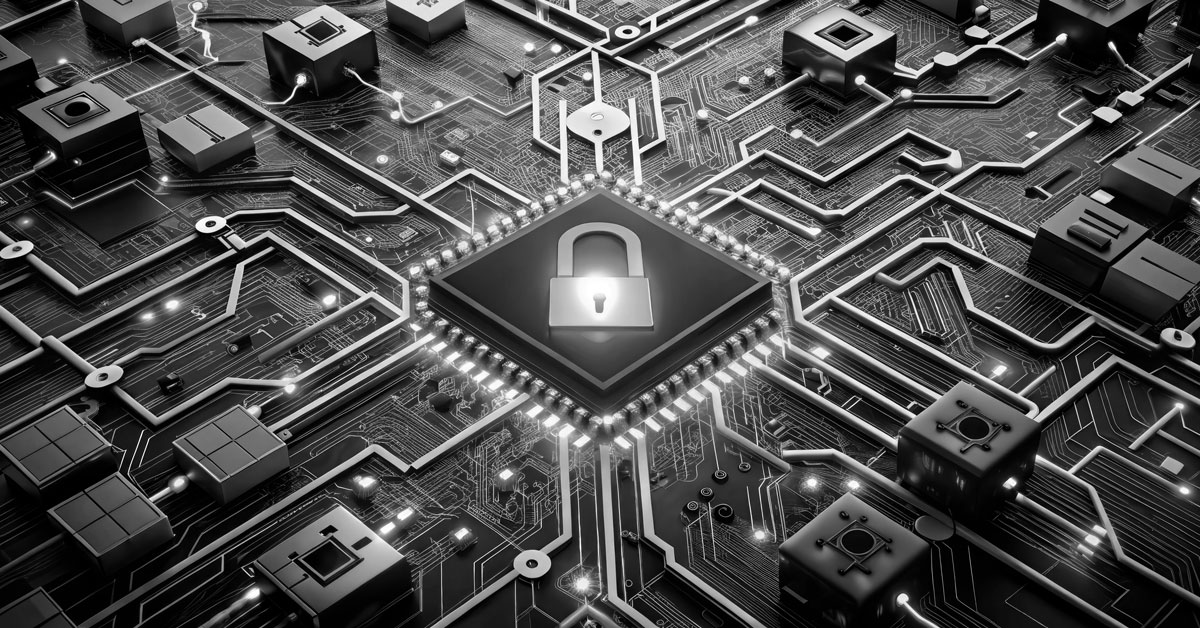What Is Cybersecurity Hygiene?
Cybersecurity hygiene is a broad term for the collection of processes, tools, and techniques used to protect digital assets and keep data safe.
The goal of maintaining “good cyber hygiene” is to ultimately prevent a data breach. Implementing strong cyber hygiene best practices ensures that due diligence is taken to secure data-bearing assets before disaster strikes, putting more work on the back end of cybersecurity (the preparation stage) instead of overloading SOCs on the front end (when the only option is to react).
Cybersecurity hygiene measures combine to reduce the risk of a successful data breach by anticipating where and how attackers will strike and putting guardrails in place ahead of time. These could be security controls, employee security awareness training modules, cybersecurity solutions and platforms, and even offensive security engagements that help keep essential systems strong.
What Are the Consequences of Poor Cyber Hygiene?
Think of cyber hygiene best practices as best practices for your physical health. Going to the doctor, getting regular checkups, eating healthy foods, and exercising regularly all combine to help you avoid health emergencies.
Similarly, positive cyber hygiene habits help your organization—and employees—avoid similar cybersecurity disasters. Conversely, consequences of poor cyber hygiene (the absence of these cyber-secure habits) can prove fatal, and can include:
Lost or stolen personally identifiable information (PII)
Compliance fines
Failed audits and loss of certification
Compromised systems
Downtime and loss of revenue
And more. In Fortra’s 2025 State of Cybersecurity Survey, putting sufficient cybersecurity hygiene measures in place was a top priority. 77% of all security professionals stated that identifying and closing security gaps was a top priority over the next six months to a year. And 45% stated that lack of security knowledge and skills was a primary concern. Grasping essential principles of cybersecurity is key to closing gaps, and skilled professionals are key to putting those preventative measures in place.
Additionally, as more compliance and risk management mandates appear in popular frameworks, maintaining solid cyber hygiene procedures is more essential than ever—to pass audits, prove reduced risk, and do away with major cybersecurity liabilities. In other words, to keep the basic cybersecurity bases covered and compliant.
Cyber Hygiene Best Practices
Good cyber hygiene best practices include:
Maintaining backups: World Backup Day highlights the importance of backing up all essential functions (offline, preferably, or in a separate location). When cyberattacks strike, as statistics indicate that they inevitably do, this simple solution can save small businesses especially from going under. Downtime kills SMEs, and it can create a dent in the revenue streams—and reputation—of large enterprises as well.
Exercising caution when opening email attachments and links: Attackers are targeting everyday employees and executives alike with more and more social engineering schemes. As sophisticated email security tools and cybersecurity platforms get better at catching criminals (via malware and IOCs, for example), threat actors turn to vulnerable workers who may be tempted to open a bad link or seemingly innocent attachment—especially when AI helps craft the email. As ENISA states, “Take time to reflect on a request for your personal information and whether the request is appropriate.”
Patching early, patching often: The US Secret Service website advises that users “Install operating system updates as soon as they are available for all devices.” This might be easier said than done for large enterprises with thousands of devices to handle. Look for automated patch management solutions that discover vulnerabilities, prioritize them, and remediate them at scale.
Maintaining an accurate software inventory: Prior, perhaps, to patching comes knowing what you have to patch in the first place. Maintaining an accurate count of all software assets is essential to defining the scope of future cyber hygiene measures. You cannot protect assets you don’t know about, so you should perform regular scans to catch employee-downloaded software (approved and unapproved) and check it for malware. Comprehensive asset discovery is key for compliance.
Strategizing one key area for improvement: Even though your cyber hygiene needs may be wholesale, there is value to starting small. Identify one key area slated for improvement and start there. Your team needs to see success to be motivated to keep going; isolating one area and “hitting it out of the park” will do just that. Where you start will depend on your cybersecurity maturity. As noted in a previous Fortra blog, “For startups, it’s important to start with simple actions like setting strong, unique passwords for each account and enabling two-factor authentication wherever possible.”
Establishing the principle of least privilege: Another great place to start is operating from a stance of zero trust. This means abiding by the principle of least privilege, or only assigning the minimum amount of access permissions on a need-to-access basis only. No extra permissions for convenience, simply role-based access with a formal approval process and regular audits to prevent abuse.
Benefits of Good Cyber Hygiene
The benefits of good cyber hygiene speak for themselves. As CISA states, they include:
Reducing the risk of cyberattacks. By adopting cyber hygiene best practices, organizations can “reduce their risk and exposure by 40% within the first 12 months,” according to CISA.
Sharpening incident response by combining the data from vulnerability scans (a cyber hygiene best practice) with threat intelligence and other risk management tools. This allows analysts to get more context on threats, validate them faster, and respond more speedily.
Avoiding surprises. As companies discover unknown assets (Shadow IT, Shadow APIs, Shadow Data) in the course of performing inventory, they can put guardrails in place that will prevent adversaries from compromising those assets sneakily and gaining a critical advantage.
Ultimately, the goal and ultimate benefit of good cyber hygiene is to improve a company’s overall security posture and make it resilient against attackers. Despite eye-grabbing headlines about sophisticated cyberattacks, low-level techniques that prey on basic security weaknesses are still common and are some of threat actors’ favorite methods of compromise.
Knowing that many companies still lack the cyber basics makes affordable “spray and pray” campaigns, simple credential compromise, and ground-level vulnerability exploitation still worthwhile—and some of the most common vectors of attack.
Common Cyber Hygiene Challenges
If implementing cyber hygiene best practices is so beneficial, why do so many organizations struggle? Common barriers to strong cyber hygiene programs include:
Buy-in from leadership. Top company brass needs to see the business benefits before going all-in on funding for cybersecurity practices that may seem less “glamorous” than advanced, AI-powered platforms. And yet these cyber hygiene basics are where most of the threats will be caught. This also is step one in creating a culture of cybersecurity: it must come from the top down if it is to be successful.
An evolving threat landscape. The dynamic nature of threats today may make “cyber hygiene basics” seem like a moving target. Are AI-powered tools considered essential? What about data security staples like data loss prevention (DLP)? The answer is that these may or may not be, depending on the maturity of your organization. It helps to have an expert cybersecurity advisor lead the way with an arsenal of advanced solutions.
Inherited in-house problems: In-house security challenges may be getting in the way of having smooth cyber hygiene practices in place. Things like out-of-date software can be ticking time bombs and should be removed, and outdated security tools can be just as cumbersome and damaging—especially because you think they’re working when they aren’t. Eliminating old bad is just as important as implementing new good.
And lastly, the ongoing battle between security and convenience rears its all-too-familiar head when battling for strong cybersecurity goals. Companies would do well to remember that cybersecurity is an essential part of the business case (and has been for some time) and that sacrificing one will ultimately mean sacrificing the other.
Your Cyber Hygiene Checklist
Building a strong cyber hygiene program might be comprehensive in its scope, but it can be simpler than it sounds. When all is said and done, it comes down to four fundamental pillars:
An inventory of resources: Inventory all known resources, then invest in tools to help you find all the unknown ones. Again, this step is absolutely essential before breaking ground on subsequent security controls and adjustments. Not having full visibility at the start means that attackers will find those hidden assets for you—and and you won’t like it.
Configuration and patch management: Once those resources are in your view, make sure they are all configured to do what you think they are doing. The only thing more dangerous than a blatant misconfiguration is a configuration that you think is right—but that isn’t. An automated configuration and patch management solution can help here, especially as nearly 60% of all cyberattacks are attributable to unpatched vulnerabilities.
Log management: Keeping track of what comes into your network via logs generated by the applications, systems, and devices on your network is a cyber hygiene practice that is par for the course. Log management is your most basic level of visibility into the threats that might harm your digital assets.
Data management: This goes a step beyond protecting systems, services, and applications alone. Data management establishes policies that look for, classify, and protect data itself, regardless of where it resides. Tools like data loss prevention (DLP), data classification, and data security posture management (DSPM) are key for securing sensitive information and maintaining compliance on-premises and in the cloud.
Go-to Resources for Enterprise-level Cyber Hygiene
Cyber hygiene does not have to be an overwhelming proposition for teams who invest in the right tools. “When you’re thinking fundamental cyber hygiene solutions, you want to focus on the big three: vulnerability management, penetration testing, and SAT [security awareness training],” says Mark Bell, Managing Director, Infrastructure Protection at Fortra. “This will enable security teams to find threats and prioritize which are the most important [while training] employees to not open the door for more attacks in the future.”
And at a time when so many attackers are leaning into social engineering exploits, advanced email security and zero trust solutions are not far behind.
Vulnerability management: Don’t wait for threat actors to find your vulnerabilities for you. Fortra Vulnerability Management keeps you one step ahead with proactive—not reactive—security.
Penetration testing: Does your vulnerability scanner leave you drowning in CVEs? Fortra Penetration Testing tells you which vulnerabilities are exploitable and worth tackling first.
Security awareness training (SAT): Don’t leave your employees in the dark. Instead of walking liabilities they can be your last line of defense. Teach them to recognize the signs of phishing, business email compromise, and more with Fortra Human Risk Management.
Email security: Defend against more than malware and known threats. Today’s attackers are leaning into scams that prey on people instead, not machines. Fortra Cloud Email Protection uses AI and machine learning to spot signs of phishing and other signature-less threats.
Zero trust: Establishing all controls within the context of a zero trust security framework saves time down the road as cybersecurity settings are set to “high” by default. Only allow access to who needs it, when they need it with Fortra’s range of zero trust solutions.
While cyber hygiene practices may seem like the “basic” end of the security stick, they provide coverage against the simple, as-a-service, spray and pray campaigns that attackers use so liberally. Understanding end-to-end cyber hygiene best practices—and the tools that facilitate them—is essential for companies looking to build a strong cybersecurity base.
Get good cyber hygiene with Fortra—and keep it.
Leverage Fortra to create a cybersecurity culture that sticks.

